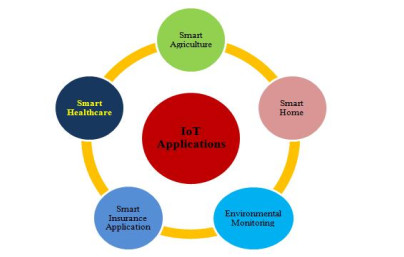Report on Advancing Sustainable Development Goals through Urban Air Quality Research
1.0 Introduction: The Urban Air Quality Imperative
A substantial and growing majority of the global population resides in urban centers. This increasing urbanization concentrates human activity, leading to heightened exposure to air pollution from various sources. Addressing the challenge of urban air quality is therefore a critical component in achieving the 2030 Agenda for Sustainable Development, with direct implications for several key goals.
- Primary Pollution Sources: Industrial activity, vehicular emissions, and domestic combustion.
- Primary Consequence: Deterioration of urban air quality, leading to significant public health crises and premature mortality.
An integrated approach to investigating the sources and health impacts of urban air pollution is essential for formulating effective policies, safeguarding vulnerable populations, and advancing global sustainability targets.
2.0 Alignment with Core Sustainable Development Goals (SDGs)
This research initiative is strategically focused on generating knowledge and solutions that contribute directly to the following United Nations Sustainable Development Goals:
- SDG 11: Sustainable Cities and Communities
Improving urban air quality is fundamental to making cities and human settlements inclusive, safe, resilient, and sustainable. Research in this area provides the evidence base needed to manage the environmental impacts of cities. - SDG 3: Good Health and Well-being
By investigating the severe negative health impacts of air pollution, this work directly supports SDG 3’s target to substantially reduce the number of deaths and illnesses from hazardous chemicals and air, water, and soil pollution and contamination. - SDG 7: Affordable and Clean Energy
Many sources of urban air pollution, such as vehicle emissions and domestic combustion, are linked to energy consumption. Research into these sources informs the critical transition towards clean and affordable energy systems, a cornerstone of SDG 7.
3.0 Scope of Required Research and Collaboration
To comprehensively address this multifaceted issue, a cross-journal collection of research is being compiled. Submissions are sought to advance scientific understanding across several key domains. An interdisciplinary approach is encouraged to foster holistic and actionable outcomes.
3.1 Key Research Areas
- Atmospheric Science: Studies on the chemical composition of urban air and advanced source attribution modeling.
- Public Health and Medicine: Investigations into the specific health impacts of urban pollutants on diverse populations.
- Engineering and Technology: Development of innovative technological solutions for pollution monitoring and mitigation.
- Policy and Management: Analysis of effective management strategies and air quality policies.
3.2 Invited Disciplines
- Atmospheric Chemistry
- Metrology
- Medicine and Epidemiology
- Environmental Engineering
- Urban Planning and Policy
1. Which SDGs are addressed or connected to the issues highlighted in the article?
The article explicitly and implicitly addresses three Sustainable Development Goals (SDGs). The analysis is as follows:
-
SDG 3: Good Health and Well-being
This goal is directly addressed. The article highlights the “severe negative health impacts and premature death” caused by air pollution. It emphasizes the importance of research to “protect vulnerable populations, and improve public health,” which is the core mission of SDG 3.
-
SDG 7: Affordable and Clean Energy
This goal is connected to the article through its mention of pollution sources. The text identifies “domestic combustion” as a contributor to poor air quality. This implies a reliance on unclean energy sources for household needs like cooking and heating, which SDG 7 aims to replace with affordable and clean alternatives.
-
SDG 11: Sustainable Cities and Communities
This is a central theme of the article. The text opens by stating that “Billions of people worldwide reside within urban areas” and focuses entirely on the problem of air pollution within cities. The call to “inform air quality policies” in cities directly relates to making urban environments more sustainable and safer for inhabitants.
2. What specific targets under those SDGs can be identified based on the article’s content?
Based on the issues discussed, the following specific targets can be identified:
-
Target 3.9
“By 2030, substantially reduce the number of deaths and illnesses from hazardous chemicals and air, water and soil pollution and contamination.” The article’s focus on investigating the “health impacts of air pollution” and reducing “premature death” directly aligns with this target’s objective to decrease mortality and illness from air pollution.
-
Target 7.1
“By 2030, ensure universal access to affordable, reliable and modern energy services.” The mention of “domestic combustion” as a pollution source points to a lack of clean energy. Achieving this target would reduce pollution from such sources, thereby improving urban air quality as discussed in the article.
-
Target 11.6
“By 2030, reduce the adverse per capita environmental impact of cities, including by paying special attention to air quality and municipal and other waste management.” This target is directly relevant as the entire article is dedicated to understanding and mitigating the impacts of urban air pollution. The call for research on “urban air quality” to “inform air quality policies” is a direct action towards achieving this target.
3. Are there any indicators mentioned or implied in the article that can be used to measure progress towards the identified targets?
Yes, the article implies several indicators used to measure progress:
-
Indicator 3.9.1
“Mortality rate attributed to household and ambient air pollution.” The article’s concern with “premature death” and “negative health impacts” resulting from air pollution directly implies the use of this indicator to quantify the problem and measure progress in reducing it.
-
Indicator 7.1.2
“Proportion of population with primary reliance on clean fuels and technology.” The identification of “domestic combustion” as a pollution source implies that a segment of the urban population is not using clean fuels. This indicator would measure the shift away from such polluting practices.
-
Indicator 11.6.2
“Annual mean levels of fine particulate matter (e.g. PM2.5 and PM10) in cities (population weighted).” The article’s call to present research that advances “our knowledge of urban air quality, in terms of composition, source attribution, and health impacts” strongly implies the measurement of specific pollutants. Fine particulate matter is a primary component of urban air pollution and a key metric for assessing air quality, making this indicator essential for tracking progress.
4. Table of SDGs, Targets, and Indicators
| SDGs | Targets | Indicators |
|---|---|---|
| SDG 3: Good Health and Well-being | Target 3.9: By 2030, substantially reduce the number of deaths and illnesses from hazardous chemicals and air, water and soil pollution and contamination. | Indicator 3.9.1: Mortality rate attributed to household and ambient air pollution. |
| SDG 7: Affordable and Clean Energy | Target 7.1: By 2030, ensure universal access to affordable, reliable and modern energy services. | Indicator 7.1.2: Proportion of population with primary reliance on clean fuels and technology. |
| SDG 11: Sustainable Cities and Communities | Target 11.6: By 2030, reduce the adverse per capita environmental impact of cities, including by paying special attention to air quality and municipal and other waste management. | Indicator 11.6.2: Annual mean levels of fine particulate matter (e.g. PM2.5 and PM10) in cities (population weighted). |
Source: nature.com







